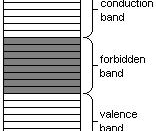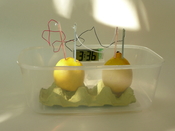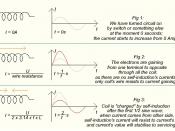Title: Investigating the current - potential difference relationship for a metal wire. Aim: To design an experiment that will facilitate an I - V Graph to be ascertained of a metal wire and thus find the resistance of the wire by deriving the inverse of the gradient of the graph. Skill: Planning & Designing Theory: Resistance is a property of any object or substance to resist or oppose the flow of an electrical current. The quantity of resistance in an electric circuit determines the amount of current flowing in the circuit for any given voltage applied to the circuit. This is according to Ohm's law. The unit of resistance is the Ohm which has the Greek letter 'Omega (â¦)'. By default, that is, for electrical calculations, the inverse of Resistance is obtained and this is known as conductance. If conductance is calculated by dividing current by potential difference then from the preceding phrase it can be deduced that, Resistance is calculated by ascertaining the inverse of conductance.
The reasons for this will be provided within the Discussion/ Conclusion section. The resistance of an object is determined by the nature of the substance of which it is composed and this is known as the resistivity which are the dimensions of the object and the temperature. Resistance, however, is expressed in terms of the Ohm resistance per cubic centimeter at 20 oC (293 K). In its simplicity, before resistance is calculated, conductance is first obtained. Therefore: Current Conductance = Potential Difference Pooran (Rocky) Appadu Theory: Current -1 Resistance = Potential Difference Hypothesis: With reference to Ohm's law, by varying the potential difference (using the rheostat), the current will increase linearly for the metal wire thus allowing an I - V graph to be ascertained. By deriving the gradient of the...



Replacement of (Ω)!!!!
This is according to Ohm's law. The unit of resistance is the Ohm which has the Greek letter 'Omega (Ω)'<<<<< This is the symbol for omega i.e. the Ohm!!
0 out of 0 people found this comment useful.